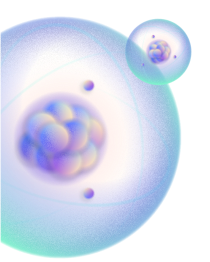ABSTRACT
First demonstrated with entangled photon pairs [1], “ghost” imaging (GI) is now recognized to be not so ghostly, and promises to have wide applications for imaging at all wavelengths by purely classical means. Quite different from conventional imaging, GI produces images indirectly through the second-order intensity correlation of two seemingly unrelated optical fields, and can be realized in turbulent scattering media under very low illumination with a resolution exceeding the Rayleigh limit. To date, GI has been demonstrated across the electromagnetic spectrum, and even with atoms, electrons and neutrons.
Our group started research on visible GI and performed the first experiment with true incoherent thermal light [2]. In 2018 we demonstrated X-ray GI with a simple table-top setup [3], without the need for a synchrotron beamline or monochromator. Although GI requires many exposures each with a different illumination mask, we obtained images with a much higher contrast-to-noise ratio compared to projection X-ray imaging for the same radiation flux. By using compressive sensing and other improved algorithms, the number of exposures required and hence the radiation dose can be greatly lowered, even down to single-photon levels. We later achieved a resolution of 10 μm with a source of size 37 μm, overcoming the resolution limit of incoherent X-ray imaging [4], and have also demonstrated energy-resolved X-ray GI [5]. In another direction, we were the first to demonstrate neutron GI with a neutron spallation source, achieving a spatial resolution of 100 um [6]. Following a brief introduction to the basic principle of GI, I will describe our recent work on spectroscopic GI, and potential applications in fields as diverse as biomedicine, material science, and archeology.
References:
[1] T.B. Pittman, Y.H. Shih, D.V. Strekalov, and A.V. Sergienko, Phys. Rev. A 52, R3429 (1995).
[2] D.Zhang, Y.H. Zhai, L.A Wu and X.H. Chen, Opt. Lett. 30 2354 (2005).
[3] A.X. Zhang, Y.H. He, L.A. Wu, L.M. Chen, and B.B. Wang, Optica 5, 374 (2018).
[4] Y.H. He, A.X. Zhang, M.F. Li, Y.Y. Huang, B.G. Quan, D.Z. Li, L.A. Wu, L.M. Chen, APL Photon. 5, 056102 (2020).
[5] Y.H. He, A.X. Zhang, W.K. Yu, L.M. Chen, L.A. Wu, Chin. Phys. Lett. 37, 044208 (2020).
[6] Y.H. He, Y.Y. Huang; Z.R. Zeng, Y.F. Li, J.H. Tan, L.M. Chen, L.A. Wu, M.F. Li, B.G. Quan, S.L. Wang, T.J. Liang, Science Bull. 66, 133, (2021).
BIOGRAPHY
Professor Ling-An WU obtained her BS degree in 1968 from Peking University. After being assigned to work on a state farm for three years, she was transferred to the Inst. of Physics, CAS, as an interpreter. Prof. WU did her graduate study at the Univ. of Texas at Austin and obtained a Ph.D. in physics in 1987. She is well-known for the first generation of squeezed states of light from an optical parametric oscillator. She returned to the Inst. of Phys. in 1987. A major achievement was the first experimental demonstration of quantum key distribution in China in 1995. Since 2009, she has focused on intensity correlation imaging with thermal light. She has published more than 180 papers with a citation of over 6000, and holds more than a dozen patents. She obtained in 2013 the CPS Xie Xi-De Award for Physics, and in 2018 the first OSA Diversity and Inclusion Advocacy Recognition Award. She is a Fellow of the Institute of Physics (UK) and past Chair of the Chinese Physical Society WGWIP.
Date & Time
Venue
Chair

